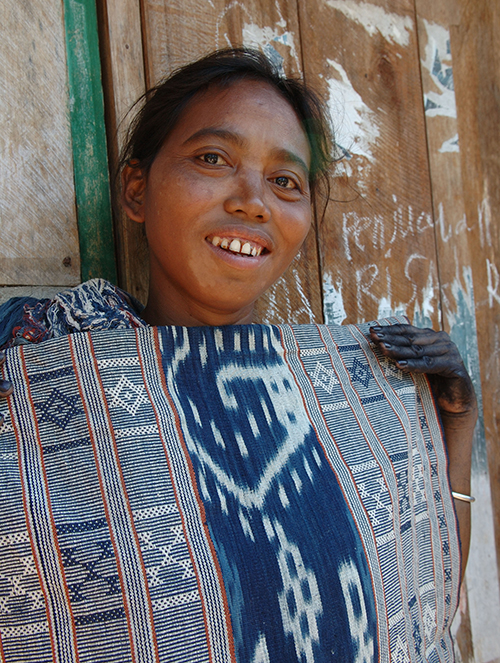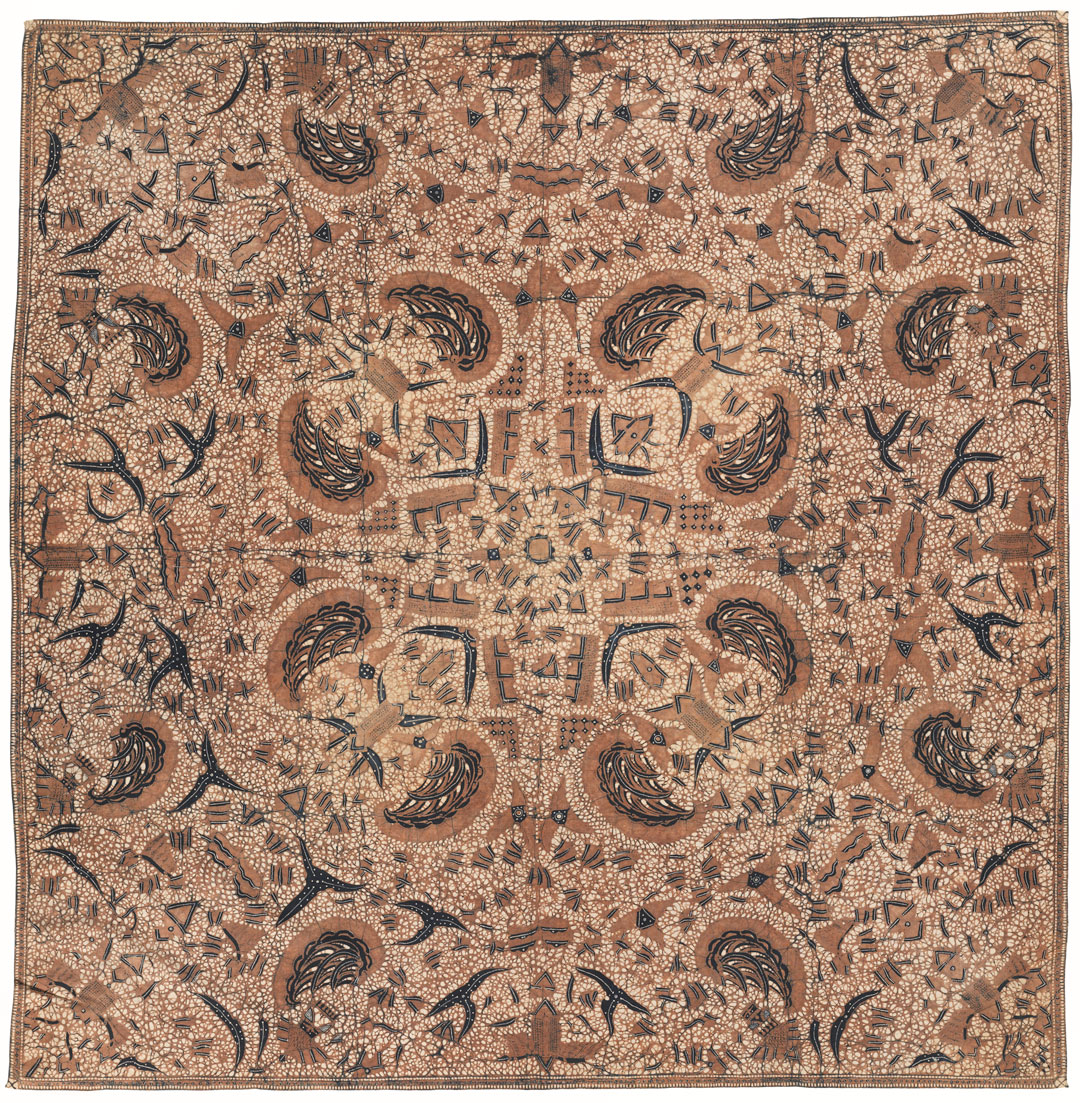

German chemists invented a synthetic indigo dye at the end of the 19th century. Within 30 years, the use of natural indigo dye began to fade away in many parts of the world. In Indonesia, however, a strong ritual process continued to honor the dark side of indigo, representing mystical awareness and references to things that can’t easily be seen. Indigo in Indonesia is often reserved for particular life circumstances or rites of passage, such as when a couple marries. This is evident in the titling of certain cloths, where it is applied in very controlled circumstances. Women who are dyers maintain the secrets of how they enact their dying, which they pass on to future generations.


Garuda wings float across this 19th century Javanese iket kepala (head cloth) in a wax resist batik pattern that would be centered on a man’s head. Garuda has both an old and new profile as a mythic birdman. He first appears in Hindu mythology to carry the god Vishnu through the heavens. Currently, the Indonesian National Airlines named Garuda contend, “Garuda is the bearer of the elixir of immortality for the Indonesian state and each person in it.” Every dot, line, and feather on this naturally dyed indigo cloth is applied in hot wax before entering numerous dye baths to achieve a rich dark combination of brown and blue/black.